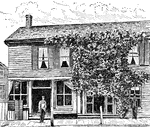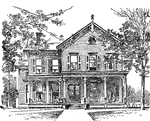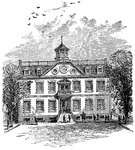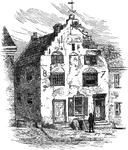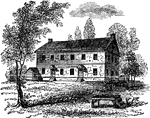
Remains of the Capitol After the Fire of 1814
The Burning of Washington took place in 1814, during the Anglo-American War of 1812. British forces…

Remains of the White House After the Fire of 1814
The Burning of Washington took place in 1814, during the Anglo-American War of 1812. British forces…

Washington Old Hall
Willian de Wessyngton was a forebear of George Washington, the first President of the United States.…

Washington Family Residence
Ferry Farm, also known as George Washington Boyhood Home Site or Ferry Farm Site, is the name of the…

Mount Vernon in Washington's Day
Mount Vernon, located near Alexandria, Virginia, was the plantation home of the first President of the…
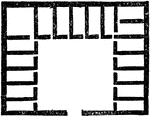
Private Dwelling Floor Plan
An illustration of a typical floor plan in an Egyptian private dwelling.
Hathor's Column
An illustration of a column with a craving of Hathor. In Egyptian mythology, Hathor (Pronounced Hah-Thor)…
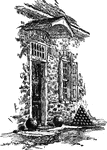
Entrance to Washington's Headquarters, Newburgh
Hasbrouck House served as Washington's headquarters during the Revolutionary War from April 1782 until…

Washington's House in Fredericksburg
Ferry Farm, also known as George Washington Boyhood Home Site or Ferry Farm Site, is the name of the…
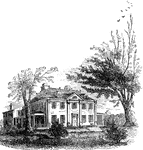
Washington's Headquarters at Cambridge, 1775
Washington used the home as his headquarters and home while he planned the Siege of Boston between July…

Montpelier: The Home of James Madison
Montpelier was the estate of James Madison, fourth President of the United States.
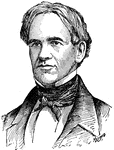
Horace Mann
Horace Mann (May 4, 1796 – August 2, 1859) was an American education reformer, and a member of…

Washington's Headquarters at New York
The Morris-Jumel Mansion (also known as the Roger and Mary Philipse Morris House), located in historic…
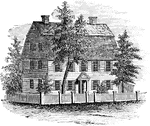
The Webb House
Joseph Webb House is a historic Georgian-style house in Wethersfield, Connecticut that was the site…
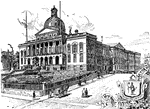
The State House, Boston, Massachusetts
The Massachusetts State House, also called Massachusetts Statehouse or the New State House, is the state…
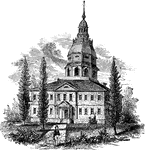
State House, Annapolis, MD
Construction began in 1772 and was not completed until 1779 due to the ongoing Revolutionary War. From…
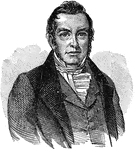
James Miller
James Miller (25 April 1776 - 7 July 1851) was a member of the United States House of Representatives…

George Washington's House on Cherry Street, New York (1789)
In 1789, George Washington lived on Cherry Street, in a four-story mansion that belonged to Walter Franklin,…

George Washington's House on Broadway, New York (1790)
In 1788, he built a magnificent home on Broadway, which in 1790 was leased to become the president's…
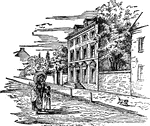
The President's House in Philadelphia (1794)
This house, located on the 500 block of Market Street, served as the executive mansion of the United…
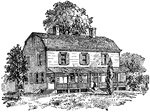
Petersfield, the Residence of Governor Stuyvesant
The residence of Governor Stuyvesant of New Netherlands in Petersfield.

Wentworth Mansion
Wentworth-Coolidge Mansion is a 40 room clapboard house. It was declared a National Historic Landmark…
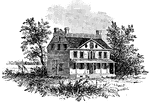
Beekman's Mansion
The Beekman Mansion was built over the course of two years, from 1802 to 1804, for the family of William…

Morris-Jumel Mansion
The Morris-Jumel Mansion, located in historic Washington Heights, is the oldest house in Manhattan.…
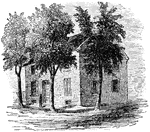
The Constitution House, Kingston
The Constitution House in Kingston, New York where the New York constitution was signed.
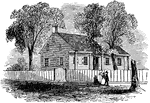
Jacob Purdy House
The Jacob Purdy House was used as General George Washington's headquarters in 1778 and possibly in 1776…
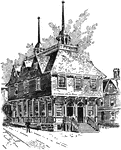
The Boston Old State House
The Old State House is a historic legislative building located at the intersection of Washington and…
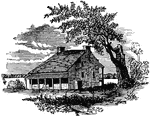
The Billop House
The Conference House (also known as the Bentley Manor and the Captain Christopher Billop House)was built…

Teepee
A tipi (also teepee, tepee) is a conical tent originally made of animal skins or birch bark and popularized…
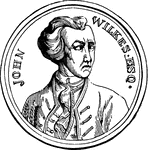
John Wilkes
John Wilkes (17 October 1725 – 26 December 1797) was an English radical, journalist and politician.…

William and Mary College (1723)
The College of William and Mary is a public university located in Williamsburg, Virginia, United States.…

Sir William Pepperell's House
The home of Sir William Pepperrell, 1st Baronet,merchant and soldier in Colonial Massachusetts. The…
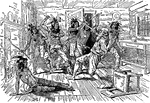
Death of Major Richard Waldron
On September 7, 1676, Waldron invited about 400 Indians to participate in a mock battle against the…

House Centipede
The House Centipede (Scutigera coleoptrata) is a yellow and gray centipede with thirty legs. It was…

Robert Charles Winthrop
Robert Charles Winthrop (May 12, 1809 – Boston) was an American lawyer and philanthropist and…
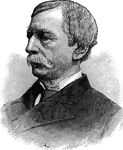
Fernando Wood
Fernando Wood (June 14, 1812 – February 14, 1881) is famous for being one of the most colorful mayors…
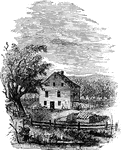
Site of Wintermoot's Fort
The Battle of Wyoming was an encounter during the American Revolutionary War between American Patriots…

Van Cortlandt's Sugar House
Van Cortlandt's Sugar House was a famous (or infamous) prison of the Revolution. It stood on the northwest…
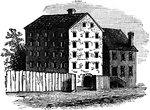
Sugar House in Liberty Street
Perhaps the worst of all the New York prisons during the American Revolution was the third Sugar House,…

Provost Jail
The New Jail was made a Provost Prison during the Revolutionary War and here officers and men of note…
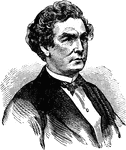
Richard Yates
Richard Yates (January 18, 1818 – November 27, 1873) was governor of Illinois during the American…

Josiah Quincy
Josiah Quincy III (February 4, 1772 – July 1, 1864) was a U.S. educator and political figure. He was…
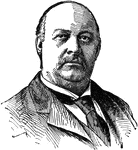
Thomas Brackett Reed
Thomas Brackett Reed, (October 18, 1839 – December 7, 1902), occasionally ridiculed as Czar Reed,…
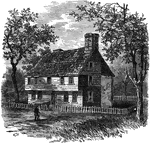
Residence of Governor Coddington
The residence of William Coddington, the first governor of Rhode Island from 1640-1647.

Rhode Island State House
The Rhode Island State House is the capitol of the U.S. state of Rhode Island located in the downtown…
British Works at Yorktown
The Siege of Yorktown or Battle of Yorktown in 1781 was a decisive victory by a combined assault of…

Walnut Street Front
David Rittenhouse erected a temporary observatory for the purpose of observing the transit of Venus…

